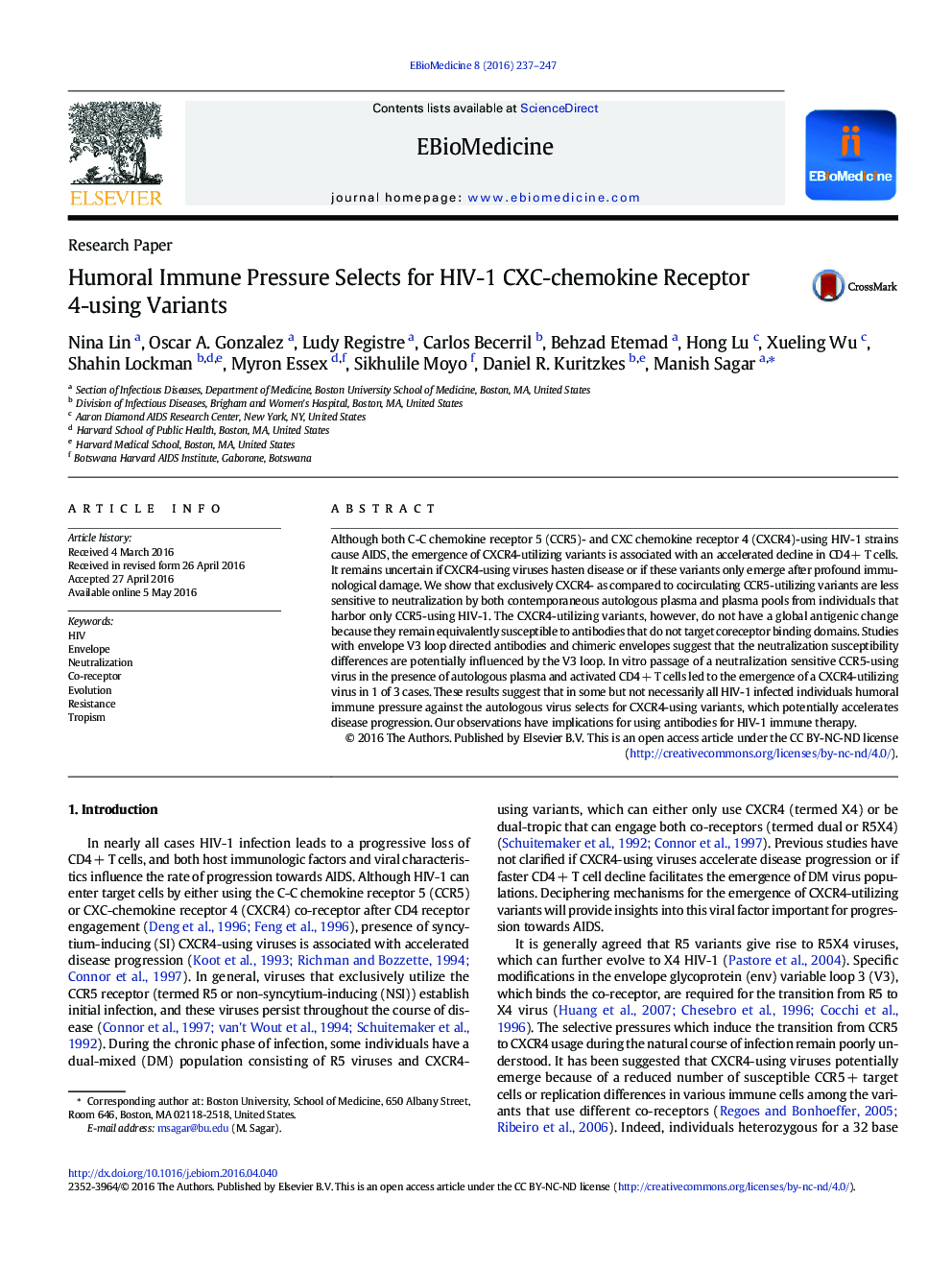| Article ID | Journal | Published Year | Pages | File Type |
|---|---|---|---|---|
| 2120768 | EBioMedicine | 2016 | 11 Pages |
•CXCR4- as compared to coexisting CCR5-using HIV are less neutralization sensitive.•CXCR4-using virus can emerge by passaging a CCR5 HIV in the presence of plasma.•Humoral immune response may lead to the emergence of CXCR4-utilizing variants.The emergence of HIV-1 variants that use the CXCR4 as opposed to strictly utilizing the CCR5 receptor (termed R5) has been associated with an accelerated progression to AIDS. Potentially, the emergence of CXCR4-using viruses hastens disease or individuals with profound immunosuppression have a greater likelihood of producing CXCR4-utilizing variants. We show that variants that exclusively use the CXCR4 (X4) are neutralization escape variants. Furthermore, CXCR4-using virus can emerge by passaging a R5 variant in the presence of autologous contemporaneous plasma. This suggests that in some individuals, humoral immune pressure against HIV-1 selects for CXCR4-utilizing variants, which accelerates disease progression.
Although both C-C chemokine receptor 5 (CCR5)- and CXC chemokine receptor 4 (CXCR4)-using HIV-1 strains cause AIDS, the emergence of CXCR4-utilizing variants is associated with an accelerated decline in CD4 + T cells. It remains uncertain if CXCR4-using viruses hasten disease or if these variants only emerge after profound immunological damage. We show that exclusively CXCR4- as compared to cocirculating CCR5-utilizing variants are less sensitive to neutralization by both contemporaneous autologous plasma and plasma pools from individuals that harbor only CCR5-using HIV-1. The CXCR4-utilizing variants, however, do not have a global antigenic change because they remain equivalently susceptible to antibodies that do not target coreceptor binding domains. Studies with envelope V3 loop directed antibodies and chimeric envelopes suggest that the neutralization susceptibility differences are potentially influenced by the V3 loop. In vitro passage of a neutralization sensitive CCR5-using virus in the presence of autologous plasma and activated CD4 + T cells led to the emergence of a CXCR4-utilizing virus in 1 of 3 cases. These results suggest that in some but not necessarily all HIV-1 infected individuals humoral immune pressure against the autologous virus selects for CXCR4-using variants, which potentially accelerates disease progression. Our observations have implications for using antibodies for HIV-1 immune therapy.
Graphical abstractFigure optionsDownload full-size imageDownload as PowerPoint slide
